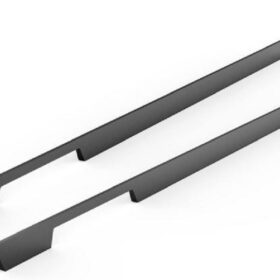Comparing Different Types of Aluminum Profiles for Cabinets
Kitchen cabinets are a crucial element of any kitchen, providing both storage and style. When planning a new kitchen or updating an existing one, choosing the right cabinet profiles is essential. Aluminum profiles offer a modern, sleek, and durable option for cabinet doors and frames. However, there are different types of aluminum profiles available, each with unique characteristics and applications.
Types of Aluminum Profiles
Extruded Aluminum Profiles
Extruded aluminum profiles are created by forcing molten aluminum through a die, resulting in a precise and uniform shape. They offer exceptional strength, rigidity, and dimensional accuracy. Extruded profiles are available in various shapes, such as U-channels, T-profiles, and L-profiles, making them suitable for a wide range of cabinet designs.
Roll-Formed Aluminum Profiles
Roll-formed aluminum profiles are produced by passing aluminum sheets through a series of rollers, shaping them into the desired profile. Roll-formed profiles are generally thinner than extruded profiles and offer greater flexibility, making them ideal for curved or contoured designs.
Anodized Aluminum Profiles
Anodizing is an electrochemical process that creates a protective oxide layer on the aluminum surface, enhancing its durability and corrosion resistance. Anodized aluminum profiles are available in various colors and finishes, allowing for both aesthetic appeal and functional benefits.
Considerations for Choosing Aluminum Profiles
Strength and Durability
Extruded aluminum profiles are generally stronger and more durable than roll-formed profiles. Consider the weight and usage of the cabinets when selecting the appropriate profile type.
Design Flexibility
Roll-formed aluminum profiles offer greater design flexibility due to their ability to be curved or contoured. If your cabinet design requires intricate shapes or curves, roll-formed profiles may be a better choice.
Corrosion Resistance
Anodized aluminum profiles provide excellent corrosion resistance, making them suitable for use in areas with high humidity or moisture, such as kitchens or bathrooms.
Aesthetics
Aluminum profiles are available in a wide range of finishes, including brushed, polished, or anodized in various colors. Choose a finish that complements the overall design of your kitchen.
Cost
The cost of aluminum profiles can vary depending on the type, size, and finish. Extruded aluminum profiles tend to be more expensive than roll-formed profiles, while anodized profiles may have a higher cost due to the additional processing involved.
Conclusion
Choosing the right type of aluminum profile for your cabinets is crucial to ensure durability, functionality, and aesthetic appeal. Consider the strength, design flexibility, corrosion resistance, aesthetics, and cost factors discussed in this article to make an informed decision. By carefully comparing the different types of aluminum profiles available, you can select the optimal solution for your kitchen cabinetry needs.
-
2024-11-29Top Trends in Modern Kitchen Cabinet Pulls for 2024
-
2024-11-28The Ultimate Guide to Modern Kitchen Cabinet Pulls- Materials, Styles, and Tips
-
2024-11-27Elevate Your Kitchen Design with These Must-Have Modern Cabinet Pulls
-
2024-11-26Sleek and Stylish- The Best Modern Kitchen Cabinet Pulls for a Contemporary Look










